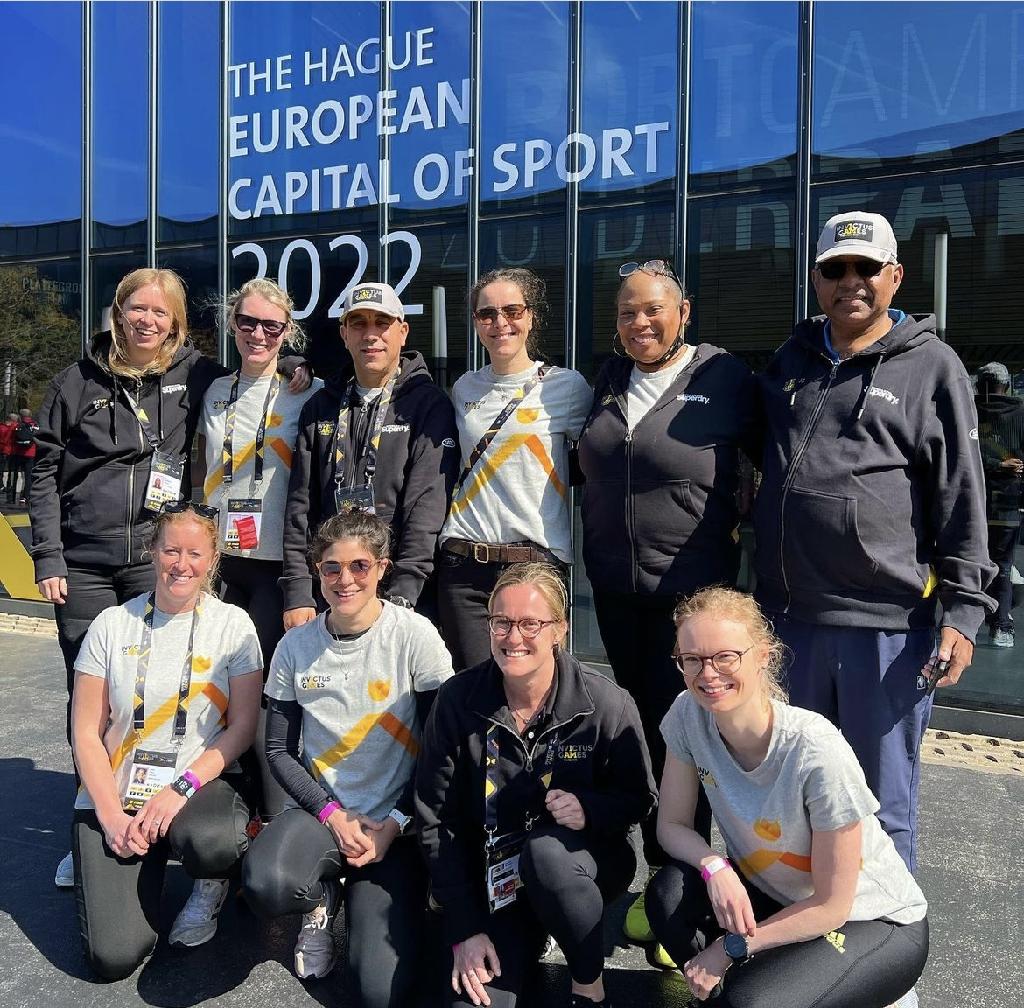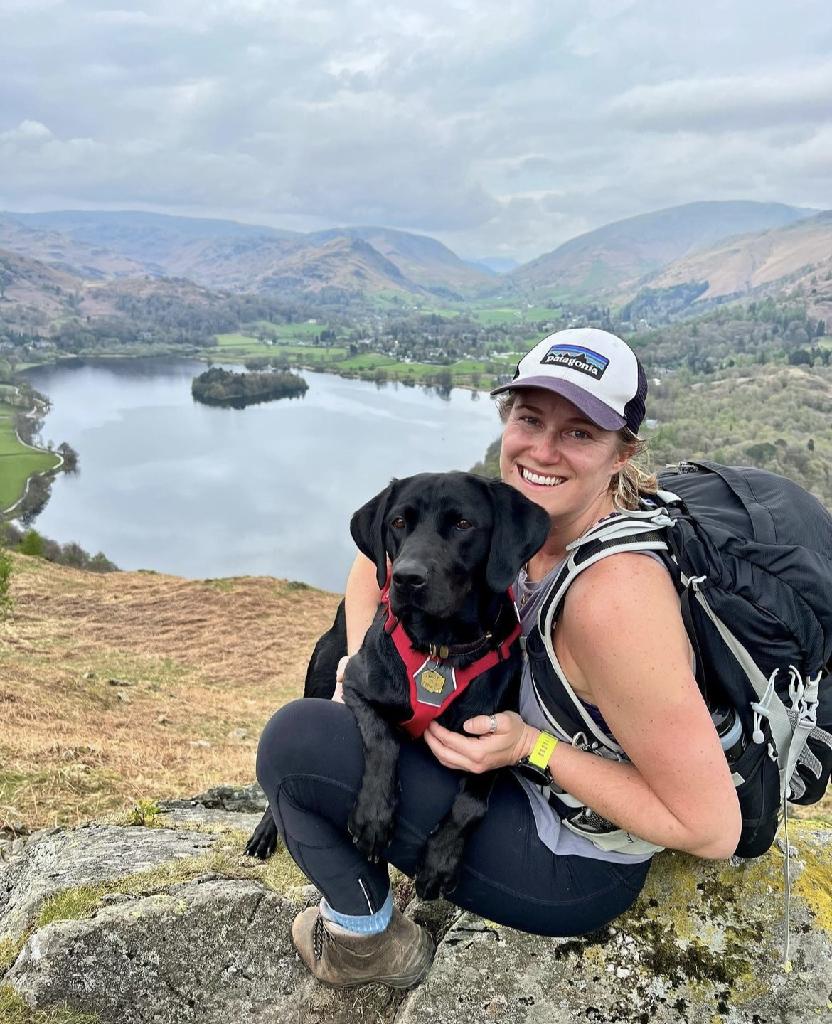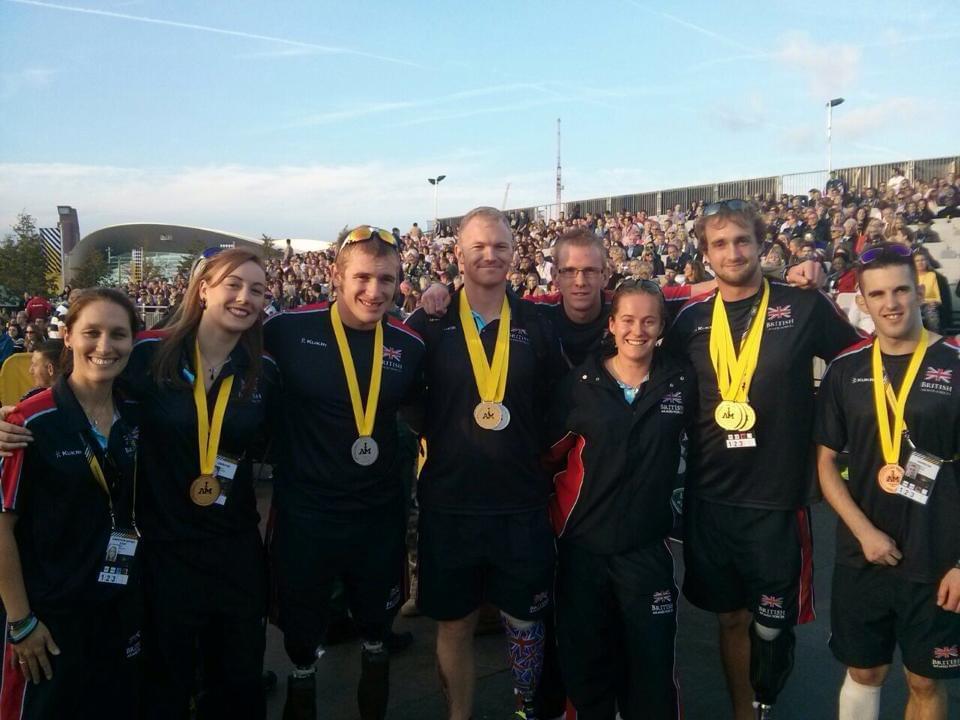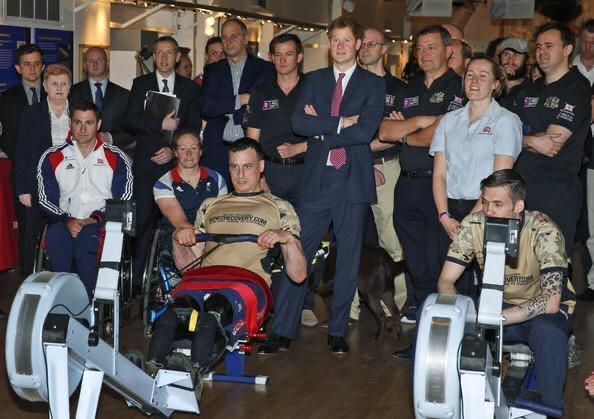2022 Lucky Jim Award Winner!
Posted by Jeremy Windsor on Aug 18, 2023
Earlier this year the British Mountain Medicine Society launched the BMMS Dr Jim Mountain Medicine Bursary. This award is designed to support those in the early stages of their career who intend to undertake a project in mountain medicine. Further details can be found here. The winner of the 2022 award is Dr Helen Blamey. Here’s Helen to tell us about what the award means to her...
Thanks Helen for speaking to me, can I start by asking you to tell us a little bit about yourself and what winning the award means to you?
I am currently an ACCS anaesthetics trainee in the Thames Valley (I know - an area not known for its mountains...!), where I live just outside of Oxford with my partner, Hannah, and Labrador, Ziggy.
Prior to medicine, which I studied as a graduate, I worked in Paralympic sport (and am lucky enough to remain involved in thanks to an 80% LTFT rota), which has gifted me an interest in understanding and promoting accessibility to outdoor and mountainous spaces for disabled people.
I first discovered the BMMS when I travelled to Birmingham in 2020 for a mountain medicine conference (joint with BMRES) to present a 4x4 slide presentation on a ‘Three Peaks Challenge’ that I completed with my friend Jordan, a unilateral transtibial amputee. When preparing for this challenge, I could find very little information on how best to support an amputee attempt at the Three Peaks (or any other challenge). My intention in attending this conference was to share my learnings from this expedition and to connect with those members of the mountain medicine community with an interest in disability and the outdoors, who might be interested in collaborating in this area. This was highly successful! I met Jeremy Windsor, with whom I co-authored ‘Completing the Three Peaks Challenge as a transtibial amputee’ in Wilderness and Expedition Medicine last year, and he has been such an advocate of my interest and work on this topic. You can read about the Three Peaks Challenge here. Our paper can be found here.

Helen (right) with multiple paralympic gold medal dressage rider Sophie Christiansen (left)
This award is an exciting opportunity to complete a project that I am hugely passionate about, and to contribute to a community under-represented in the research and literature. Additionally, I hope sharing knowledge on this theme can contribute to mountain medicine practitioners’ awareness of supporting individuals with impairments on expeditions. With Hari Budha Magar, a bilateral transfemoral amputee recently summiting Everest, I hope more and more disabled people will look to get out into the mountains.
I am immensely grateful to the BMMS and the ‘Lucky Jim’ award for this opportunity; I was not fortunate enough to meet Jim, but I hope he would approve of this project!
Tell us about the project that you won the award for. What questions are you trying to answer?
The project I won the award for is ‘Investigating Naismith’s Rule for lower limb amputees’. The eponymous Naismith’s Rule, established in 1892, assists the route planning of any expedition by calculating how long it will take to travel the intended route; allow 1 hour for every 5km walked, and add 1 hour for every 600m of ascent. The Langmuir Correction calculates the opposite and allows for descent of slopes; minus 10mins per 300m descent for slopes between 5-12 degrees, plus 10mins for each 300m descent for slopes >12 degrees.

Helen with an international team of physiotherapists and doctors at the 2022 Invictus Games
These calculations are best estimates, but nevertheless have stood the test of time from their early inception and are still used for route planning today. However, how do these calculations cater for hillwalkers with lower limb amputations?
A significant number of amputees are young and physically active. Many of these individuals wish to engage in mountain activities. Within the UK military alone, 132 people sustained an amputation within the 5-y period from April 1, 2015 to March 31, 2020. However, there is currently a lack of evidence available over how safe practice in this environment can take place.
We therefore intend to a) learn more about the barriers and opportunities to accessing mountain activities for people with disabilities and b) obtain hill-walking data from a group of adults who have had a lower limb amputation/s and are keen to walk in the mountains.
Could a new Naismiths Rule/Langmuir Correction be identified for lower limb amputees? Does this differ between unilateral and bilateral amputees? Or between above and below knee amputees?
How will you go about answering the question?
I envisage two parts to this project:
(a) horizontal walking speed (km/hour)
(b) ascent rate (m/hour)*
(c) descent rate (m/hour)*
*will be completed over a range of different gradients.
These results will (hopefully!) allow us to calculate a new Naismith's Rule and Langmuir Correction for those with lower limb prostheses. In the future, this will help improve mountain safety as it allows amputees to accurately predict the time it takes to ascend and descend mountainous territory.

Helen on Loughrigg Fell with her 3 year old Labrador, Zippy
The best research is often done through collaboration, who will be working with you on this?
I am so pleased to be working with Jeremy Windsor again, who is an absolute font of knowledge and enthusiasm. He also has the added bonus of being connected with the UCLan to who we will apply to seeking ethical approval prior to the project commencement.
To achieve maximum objectivity and add validity to the data, it is necessary to involve as many participants as possible – the most important collaborators! I would look to approachorganisations who already engaging participants – for example ‘Walking with the Wounded’, ‘Help for Heroes’,‘Disabled Ramblers’, and hope it might be possible to collect data at events they are hosting, or to advertise a specific event if we decide to host our own.

Helen at the inaugural 2014 Invictus Games alongside members of Team UK's rowing squad
How will you present the results?
I would like to first share the results with the BMMS given their support has enabled the project to go ahead!
I hope to enter the 2023/4 intake for the MSc in Mountain Medicine now hosted by UCLan, and it would be excellent to have the data collected and available to write up for the dissertation component of this. The aim would be to publish this then in a peer-reviewed journal.
I was delighted to present the Three Peaks expedition at the ISMM World Congress on Mountain Medicine in 2021, and to the UIAA MedCom annual meeting in Hathersage, and would seek to do this again.
My perspective is the more people who hear and read about the project and the topic the better, so any suggestions warmly welcomed!

Helen alongside Prince Harry and members of Team UK
What are you hoping to learn along the way?
I hope to connect with diverse and interesting people with fascinating stories to share about their experiences accessing outdoor spaces and mountain activities. I hope I can walk alongside people and see the world through their eyes for a short while. I expect I will be frustrated with the barriers of inaccessibility – not the natural world, but those systemic barriers placed by society that make life harder for disabled people.
I hope to obtain some rich qualitative data through the questionnaire study that will help inform our practical study, and that this will give suggestions that can improve access and independence in mountain activities, and in planning support for these events as a medical practitioner.
Most of all I hope to answer the question could a new Naismith’s Rule/Langmuir Correction be identified for lower limb amputees?!
Thanks Helen - the BMMS wish you all the best with your project!
Thanks for reading this post. If this is your thing why don't you take a look at other posts on the blog? Better still, why not join the British Mountain Medicine Society? More information can be found here
Applications for the 2023 Lucky Jim Award are now open! Details can be found here.
Why not incorporate your project into an MSc in Mountain Medicine? Here's another good example!
For more information about the University of Central Lancashire's Diploma in Mountain Medicine (DiMM) take a look at this.
Comments
Leave a comment.



 )
)